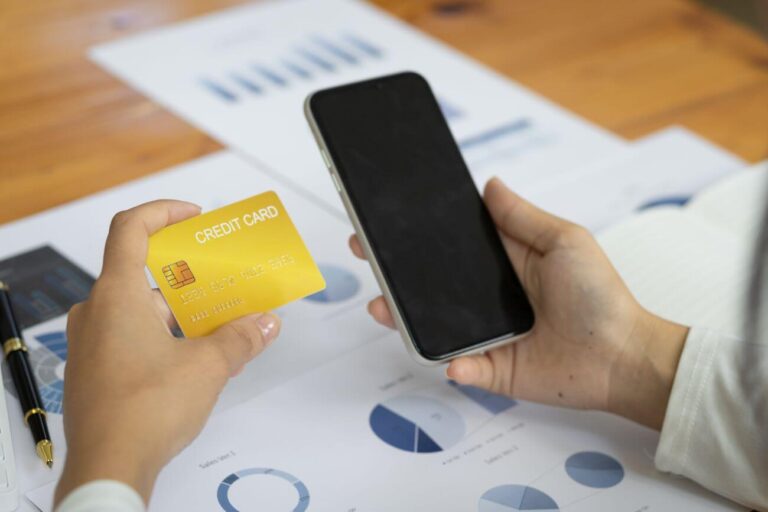In an era where digital transactions are becoming the norm, ensuring the security of our financial information has never been more crucial. Enter card tokenization, a game-changing technology that’s revolutionizing the way we handle sensitive data in the world of Banking as a Service (BaaS). This article will dive deep into the world of tokenization, exploring its inner workings, benefits, and the pivotal role it plays in securing our digital wallets.
What is Card Tokenization and How Does it Work?
Imagine you’re at a fancy masquerade ball. Everyone’s wearing elaborate masks, making it impossible to identify who’s who. That’s essentially what card tokenization does for your credit card information. It takes your sensitive card details and replaces them with a unique, randomly generated code called a token. This token acts as a disguise for your real card information, allowing it to move through payment systems without revealing its true identity.
Here’s how it works in practice:
- When you make a purchase, instead of sending your actual credit card number to the merchant, your card details are sent to a token vault.
- This vault, which is basically a super-secure digital safe, generates a token and sends it back to the merchant.
- The merchant then uses this token to process the transaction.
The beauty of this system is that even if a hacker manages to intercept the token, it’s completely useless to them because it’s just a random string of characters that can’t be reverse-engineered to reveal your actual card details. But tokenization isn’t just a one-trick pony. It’s incredibly versatile and can be used in various scenarios.
For instance, when you save your card details on an e-commerce website for future purchases, what’s actually being stored is the token, not your real card information. This means that even if the website’s database is breached, your card details remain safe and sound in the token vault. Similarly, when you add your card to a digital wallet like Apple Pay or Google Pay, it’s tokenized, adding an extra layer of security to your mobile payments.
The technology behind tokenization is constantly evolving, with advancements like dynamic tokenization coming into play. This involves generating a new token for each transaction, making it even harder for fraudsters to crack the code. It’s like changing your mask at the masquerade ball for every dance – confusing and frustrating for anyone trying to figure out who you really are!
The Benefits of Tokenization in Banking as a Service
Remember those headline-grabbing hacks where millions of credit card details were stolen? With tokenization, those breaches become a lot less scary. Even if hackers manage to break into a merchant’s system, all they’ll find is a bunch of useless tokens.
But the benefits don’t stop at security. Tokenization is also a huge time-saver for both consumers and businesses. Think about how annoying it is when your credit card expires or gets compromised, and you have to update your details on every single website where you shop. With tokenization, that hassle becomes a thing of the past. The token stays the same even if your underlying card details change, meaning you can update your card once with the token provider, and it’s automatically reflected everywhere you shop.
For businesses, especially those in the Banking as a Service (BaaS) sector, tokenization is a compliance dream come true. It significantly reduces the scope of PCI DSS (Payment Card Industry Data Security Standard) compliance because they’re not actually handling or storing real card data. This means less time and money spent on complex security audits and more resources available for innovation and improving customer experience.
Tokenization also opens up new possibilities for personalized services. Because tokens can be linked to additional data without compromising security, businesses can offer more tailored experiences. For example, a coffee shop could use tokenization to create a loyalty program that remembers your favorite drink, without having to store your actual card details.
Moreover, tokenization is playing a crucial role in the expansion of omnichannel banking. It allows for seamless and secure transactions across multiple platforms – whether you’re shopping online, in-store, or through a mobile app. This flexibility is key in the modern banking landscape, where customers expect to be able to manage their finances anytime, anywhere, and on any device.
Challenges and Future of Tokenization in Digital Banking
While tokenization is undoubtedly a powerful tool in the digital banking arsenal, it’s not without its challenges.
- One of the biggest hurdles is the need for widespread adoption and standardization. For tokenization to reach its full potential, it needs to be implemented consistently across different payment systems, merchants, and financial institutions. It’s a bit like trying to get everyone in the world to agree on a single language – theoretically great, but practically challenging.
- Another challenge lies in educating consumers about the benefits of tokenization. Many people are still wary of storing their card details digitally, not realizing that tokenization actually makes it safer than traditional methods.
- There’s also the technical challenge of implementing tokenization systems, especially for smaller businesses or those in developing markets. Setting up a robust tokenization infrastructure requires significant investment in technology and expertise. It’s not just about replacing numbers with tokens; it’s about creating an entire ecosystem that can generate, manage, and detokenize these tokens securely and efficiently.
Looking to the future, tokenization is set to play an even bigger role in the world of digital banking. We’re likely to see more advanced forms of tokenization that go beyond just protecting card numbers. For instance, biometric tokenization could allow for secure authentication using fingerprints or facial recognition, without actually storing this sensitive biometric data.
The integration of tokenization with emerging technologies like blockchain and artificial intelligence is another exciting frontier. Imagine a system where AI can analyze tokenized transaction data to detect fraud patterns, all while maintaining the privacy of individual users. Or consider how blockchain could be used to create even more secure and transparent token vaults.
As the Internet of Things (IoT) continues to grow, tokenization will be crucial in securing payments made through smart devices. From your refrigerator ordering groceries to your car paying for its own parking, tokenization will be the invisible guardian ensuring these transactions are safe and secure.
In conclusion, while card tokenization in Banking as a Service faces challenges, its future is bright and full of potential. As the technology evolves and becomes more widespread, it promises to make our digital wallets not just more secure, but smarter and more convenient too. The digital banking revolution is well underway, and tokenization is leading the charge in ensuring it’s a safe and seamless journey for all of us.
Promotional content
See also:






